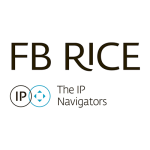Since 1948, the federal government’s Pharmaceutical Benefits Scheme (PBS) has aimed to provide timely, reliable, and affordable access to medicines. This is achieved through price subsidisation which amounted to A$13.8 billion (approximately $9.5 billion) in 2020-2021.
While both originator and generic medicines are listed on the PBS, maintaining exclusivity for a patented medicine is obviously valuable.
The Patents Act 1990 provides that the normal 20-year term for human pharmaceutical patents may be extended for up to five years. While the requirements to qualify for a patent term extension are quite prescriptive, the determination of the extension is relatively generous.
Qualifying for a PTE
The Patents Act 1990 requires for small molecules that:
(a) One or more pharmaceutical substances per se are in substance disclosed in the complete specification of the patent and in substance fall within the scope of the claim or claims of that specification;
(b) Goods containing, or consisting of, the substance have been included in the Australian Register of Therapeutic Goods (ARTG); and
(c) A PTE application must be filed by the later of six months after the issue of the patent or listing in the ARTG.
“Pharmaceutical per se” means that only claims to compounds or pharmaceutical compositions qualify for a PTE.
Calculation of extension
The extension is calculated based on the difference between the date of the patent and the earliest first regulatory approval date in relation to any of the pharmaceutical substances. This period is reduced by five years (but not below zero).
Restriction of patentee rights?
Generally, patents qualifying for a PTE will only claim one pharmaceutical substance per se for which there must be a first regulatory approval date. But are extensions available when there are two or more pharmaceutical substances claimed in a single patent where the respective products have been included on the ARTG?
Further, is a PTE obtainable based on a patentee’s product which is included on the ARTG but a third-party product exists having an earlier ARTG listing date falling within the scope of the patent?
Finally, can a claim in European Patent Convention (EPC) 2000 format support a PTE?
The Federal Court has considered these three questions and answered them all in the negative.
Although negative, the first two decisions are consistent with the requirements of the Act. However, if the third is correct, it represents an erosion of a patentee’s right to a PTE.
Merck Sharp & Dohme v Sandoz [2022] FCAFC 40
Merck Sharp & Dohme Corp (MSD)’s Australian patent 2002320303 dated July 5 2002 disclosed and claimed two pharmaceutical substances per se. These were listed separately on the ARTG as Januvia (sitagliptin) on November 16 2006 and Janumet (sitagliptin and metformin combination) on November 27 2008.
MSD took infringement action against Sandoz which resulted in the Federal Court finding that a PTE was available but the term was zero.
This finding was based on the Act’s references to “one or more pharmaceutical substances per se” and “the period beginning on the date of the patent and ending on the earliest first regulatory approval date … in relation to any of the pharmaceutical substances” (emphasis added). Consequently the date of inclusion of Januvia was determinative in calculating the term.
This outcome could have been avoided if the patentee had made each product the subject respectively of parent and divisional patents.
Commissioner of Patents v Ono Pharmaceutical [2022] FCAFC 39
At first instance, the Patent Office determined that Ono was entitled to a zero extension of term because a product, Keytruda, had an earlier ARTG listing date and it fell within the scope of a claim of Ono’s patent. Keytruda is a third-party product.
On full Federal Court appeal (considered concurrently with MSD), it was found that ownership of the earlier product was irrelevant. Therefore a PTE calculation required reference to the Keytruda listing date. This accords with the MSD decision.
Biogen International v Pharmacor [2021] FCA 1591
Biogen sought an interlocutory injunction to restrain an infringing product sold by Pharmacor. Biogen had been granted a PTE for its patent by the Patent Office based on a claim in EPC 2000 format.
According to the Federal Court, a claim in EPC 2000 format is not a claim to a pharmaceutical substance per se but rather a purpose-limited claim. Based on the potential invalidity of the PTE and other factors, the injunction was refused.
This construction of an EPC 2000 format claim is arguably flawed. “For” merely requires suitability for the intended purpose. Nevertheless, given the economic importance of pharmaceutical patents, it is to be expected that further PTE litigation will ensue.












